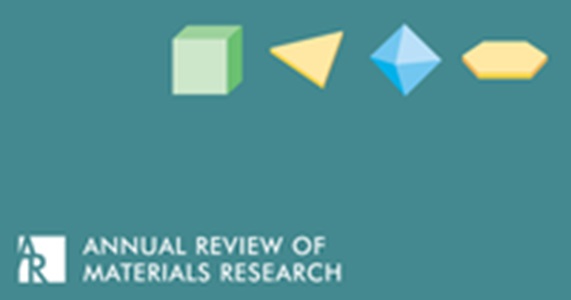Extreme Abnormal Grain Growth: Connecting Mechanisms to Microstructural Outcomes
IF 10.4
2区 材料科学
Q1 MATERIALS SCIENCE, MULTIDISCIPLINARY
引用次数: 1
Abstract
If variety is the spice of life, then abnormal grain growth (AGG) may be the materials processing equivalent of sriracha sauce. Abnormally growing grains can be prismatic, dendritic, or practically any shape in between. When they grow at least an order of magnitude larger than their neighbors in the matrix—a state we call extreme AGG—we can examine the abnormal/matrix interface for clues to the underlying mechanism. Simulating AGG for various formulations of the grain boundary (GB) equation of motion, we show that anisotropies in GB mobility and energy leave a characteristic fingerprint in the abnormal/matrix boundary. Except in the case of prismatic growth, the morphological signature of most reported instances of AGG is consistent with a certain degree of GB mobility variability. Open questions remain, however, concerning the mechanism by which the corresponding growth advantage is established and maintained as the GBs of abnormal grains advance through the matrix. Expected final online publication date for the Annual Review of Materials Research, Volume 53 is July 2023. Please see http://www.annualreviews.org/page/journal/pubdates for revised estimates.极端异常晶粒生长:与微观结构结果的联系机制
如果品种是生活的调味品,那么异常颗粒生长(AGG)可能是相当于斯里拉查酱的材料加工。异常生长的晶粒可以是棱柱状、枝状或介于两者之间的任何形状。当它们比它们在基质中的邻居至少增长一个数量级时——我们称之为极端agg状态——我们可以检查异常/基质界面,寻找潜在机制的线索。对晶界(GB)运动方程的各种公式进行AGG模拟,我们发现晶界迁移率和能量的各向异性在异常/矩阵边界上留下了特征指纹。除棱柱形生长外,大多数AGG的形态特征都与一定程度的GB迁移率变异相一致。然而,当异常晶粒的GBs穿过基体时,相应的生长优势是如何建立和维持的,这一机制仍然存在疑问。预计《材料研究年度评论》第53卷的最终在线出版日期为2023年7月。修订后的估计数请参阅http://www.annualreviews.org/page/journal/pubdates。
本文章由计算机程序翻译,如有差异,请以英文原文为准。
求助全文
约1分钟内获得全文
求助全文
来源期刊

Annual Review of Materials Research
工程技术-材料科学:综合
CiteScore
17.70
自引率
1.00%
发文量
21
期刊介绍:
The Annual Review of Materials Research, published since 1971, is a journal that covers significant developments in the field of materials research. It includes original methodologies, materials phenomena, material systems, and special keynote topics. The current volume of the journal has been converted from gated to open access through Annual Reviews' Subscribe to Open program, with all articles published under a CC BY license. The journal defines its scope as encompassing significant developments in materials science, including methodologies for studying materials and materials phenomena. It is indexed and abstracted in various databases, such as Scopus, Science Citation Index Expanded, Civil Engineering Abstracts, INSPEC, and Academic Search, among others.
 求助内容:
求助内容: 应助结果提醒方式:
应助结果提醒方式:


